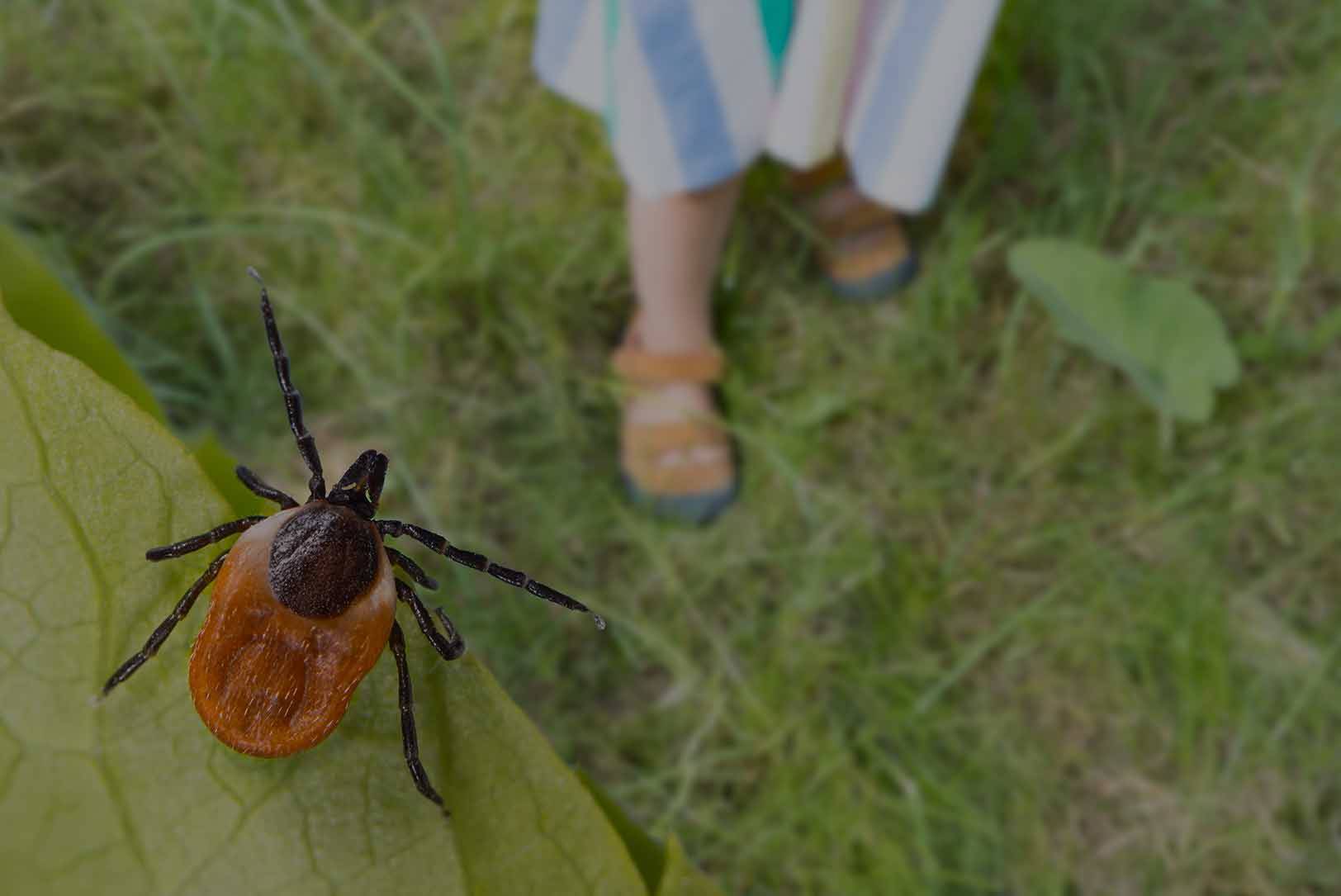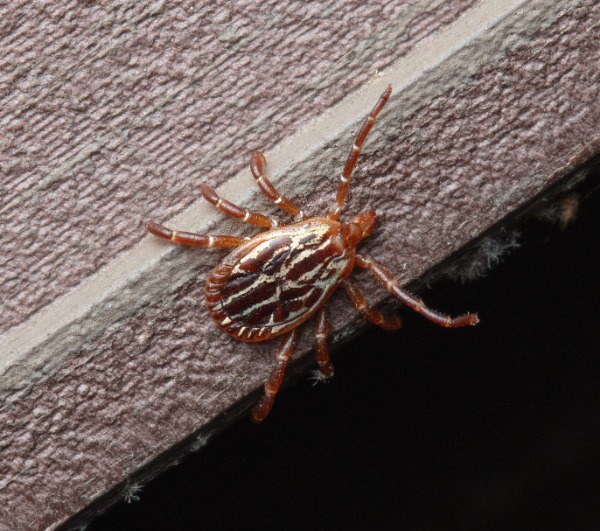Last Updated:
August 16, 2025
Ticks are a year-round concern in the Kansas City area, and they can carry dangerous diseases with unpleasant bites, making it important to know exactly which types of ticks you might encounter. Recognizing each type can help you take the right precautions to protect yourself, your family, and your pets.
Below, we’ll cover the most common species found in Kansas City and what you need to know about each in order to avoid them. Be sure to check out our tick control service in Kansas City if you need help getting rid of these pests in your yard.

The Lone Star tick is one of the most frequently encountered ticks in Missouri and Kansas. Named for the single silvery-white spot on the back of adult females, this tick is easily recognizable if you know what to look for. Males lack the lone spot but still have distinctive patterns on their backs. They thrive in wooded areas, grassy fields, and along trails, making them a common nuisance for hikers and outdoor enthusiasts.
The Lone Star tick is a carrier of several illnesses, including ehrlichiosis, tularemia, and Southern tick-associated rash illness (STARI). While STARI can resemble Lyme disease, it is caused by a different pathogen. In rare cases, Lone Star tick bites have been linked to a red meat allergy known as alpha-gal syndrome, which can cause severe reactions. Because these ticks can bite humans, pets, and wildlife, it’s essential to check yourself and your animals after spending time outside, especially in the late spring through early fall when they are most active.
Identifying Traits:

The American dog tick is another species you’ll frequently see in Kansas City, especially in open grassy areas and along roadsides. These ticks are relatively large, making them easier to spot, and they have a mottled brown and white pattern on their backs. While their name suggests they prefer dogs, they will feed on a variety of hosts, including humans. Adult American dog ticks are particularly active in the warmer months, especially late spring through midsummer.
The primary disease associated with American dog ticks is Rocky Mountain spotted fever (RMSF), a potentially life-threatening illness if not treated promptly. Symptoms can appear within days of a bite and may include fever, rash, muscle aches, and headaches. This tick can also cause tick paralysis in rare cases, a condition that resolves once the tick is removed. Because they often attach higher on the body, including the scalp, careful head checks after outdoor activity are important.
Identifying Traits:

The blacklegged tick, also known as the deer tick, is smaller than both the Lone Star and American dog tick, but it’s arguably the most concerning from a disease standpoint. Adult females have reddish-orange bodies with dark legs and a black shield behind the head. These ticks prefer shaded, moist environments such as wooded areas, leaf litter, and brushy edges near trails. They are most active in cooler months, particularly late fall through early spring, but can be encountered year-round.
The blacklegged tick is the primary vector for Lyme disease, a serious illness that can cause long-term health problems if untreated. They can also carry anaplasmosis, babesiosis, and Powassan virus. Because they are so small, especially in the nymph stage, blacklegged ticks can be difficult to detect. Performing thorough tick checks after outdoor activities and wearing light-colored clothing to spot them more easily are both important preventive measures.
Identifying Traits:

While less of a threat in wooded or grassy areas, the brown dog tick is noteworthy because it can infest homes and kennels. This species has a reddish-brown, elongated body and thrives in warmer, indoor environments. Unlike most other ticks, the brown dog tick can complete its entire life cycle indoors, making it a persistent problem if introduced into the home. They are most often brought inside by dogs, but they will feed on humans as well.
The brown dog tick is a known carrier of canine ehrlichiosis and canine babesiosis, which can cause serious illness in pets. While they are less likely to transmit disease to humans than some other species, they are still an unwelcome intruder due to their ability to reproduce rapidly in indoor environments. Regularly inspecting and treating pets, especially after boarding or trips to dog parks, is key to preventing an infestation.
Identifying Traits:

Though traditionally found in the southeastern United States, the Gulf Coast tick has been increasingly reported in parts of Missouri and Kansas in recent years. This tick is similar in size and appearance to the American dog tick but has more distinct silver markings. They prefer open, sunny habitats such as grasslands and pastures, and they are more common in rural areas than in heavily wooded locations.
The Gulf Coast tick can transmit Rickettsia parkeri rickettsiosis, a disease similar to but generally milder than Rocky Mountain spotted fever. In addition to transmitting disease, their bites can cause irritation, swelling, and secondary infections if scratched. As their range expands northward, awareness of this tick in Kansas City is becoming more important for outdoor workers, hunters, and anyone who spends time in tall grass or rural fields.
Identifying Traits:
While each species has its own habits, the prevention basics remain the same: wear protective clothing, use tick repellents, perform thorough body checks after spending time outdoors, and check pets frequently. Removing a tick as soon as possible greatly reduces the risk of disease transmission, so keep fine-tipped tweezers on hand for quick removal.
Call Heartland today if you need help with tick control services in Kansas City!